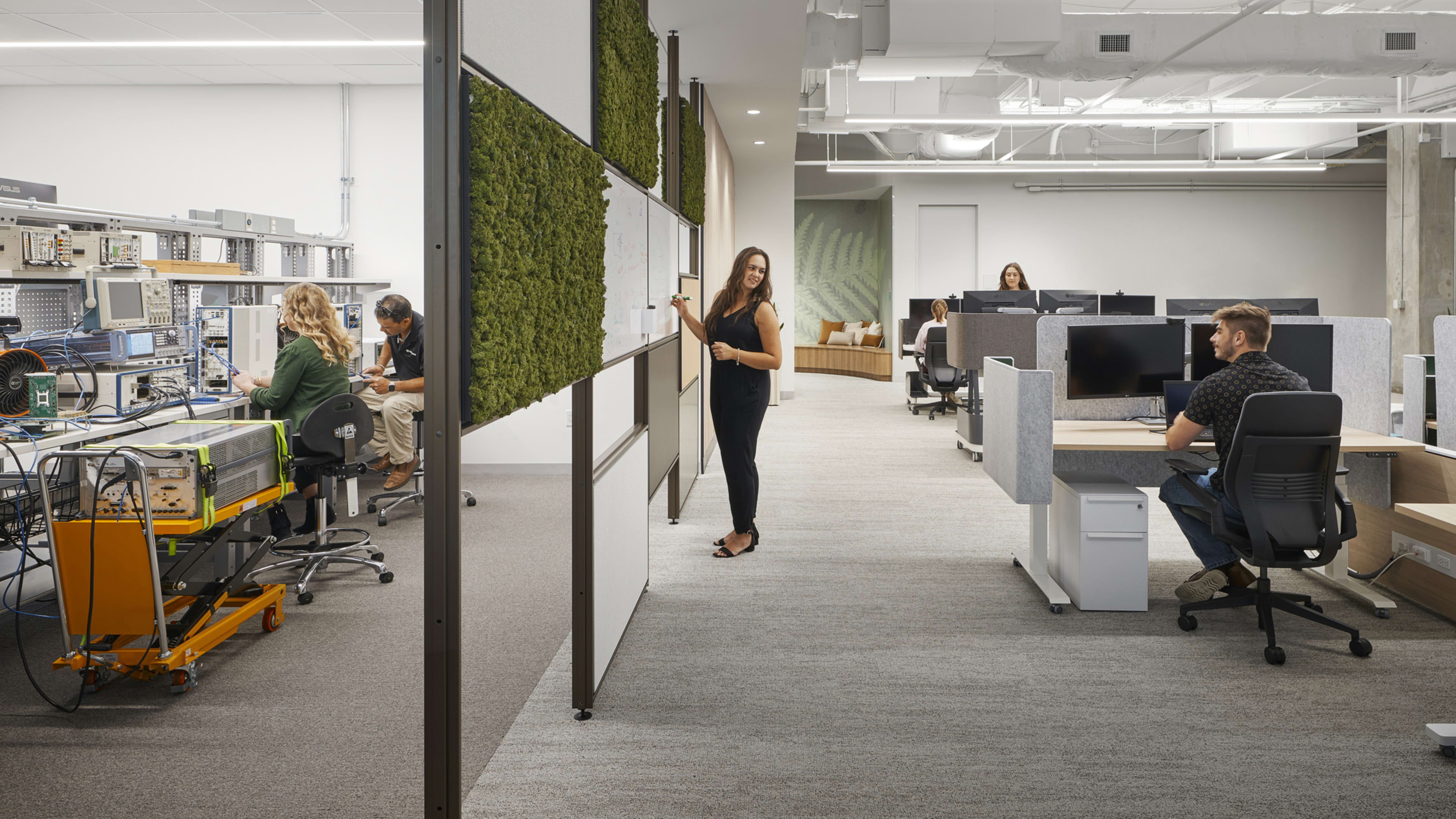When the testing equipment company NI set out to renovate its corporate campus in Austin, the project was seen as more of a science experiment than a straightforward design process. While other companies may have just hired a design firm and implemented whatever scheme they came up with, NI wanted to base the look and feel of its new offices on some hard data. So they ran some tests.
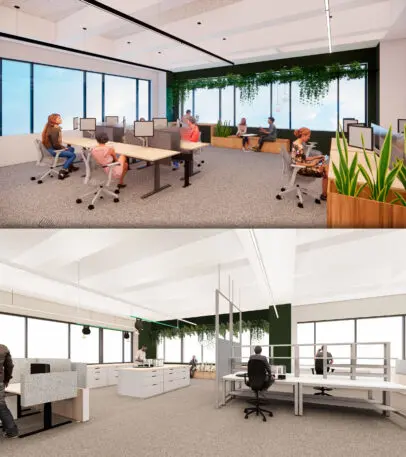
Working with the design and architecture firm Gensler, NI turned part of its campus into a test facility, where potential design concepts could be used by employees and evaluated. Last June, Fast Company looked at this test-based design while it was in process. Before any drawings had been made, the designers conducted detailed surveys of employees to learn more about what they liked and disliked about their offices. Workers told them they wanted offices that enabled more collaboration, more workplace flexibility, and more engagement. With this guidance, the design team developed three space types to physically prototype in a 20,000-square-foot section of NI’s offices. Between July and December of last year, this space was outfitted with those designs and opened up to NI’s teams to assess for a few weeks at a time.
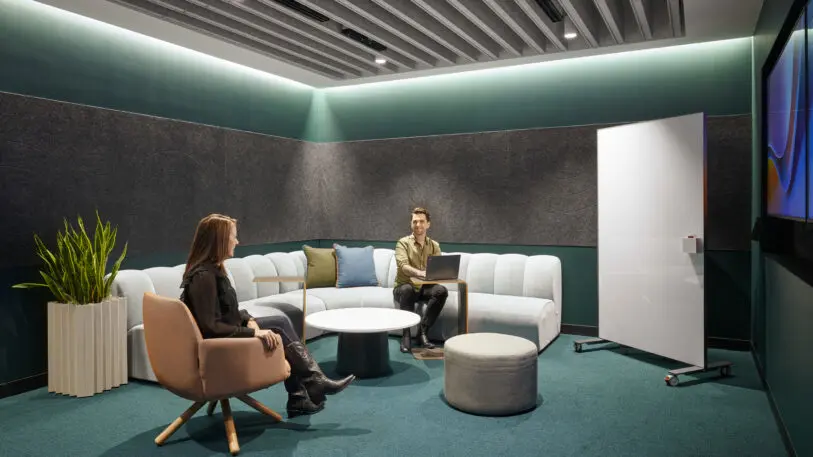
After half a year of testing, surveys, and analyses, NI has taken employee feedback and landed on a new design approach that it plans to roll out across its three-building, 750,000-square-foot office complex. The design offers a mix of flexible work spaces, collaboration zones, huddle rooms, and conference rooms, as well as the lab-like benches and worktables used by NI’s hardware team.
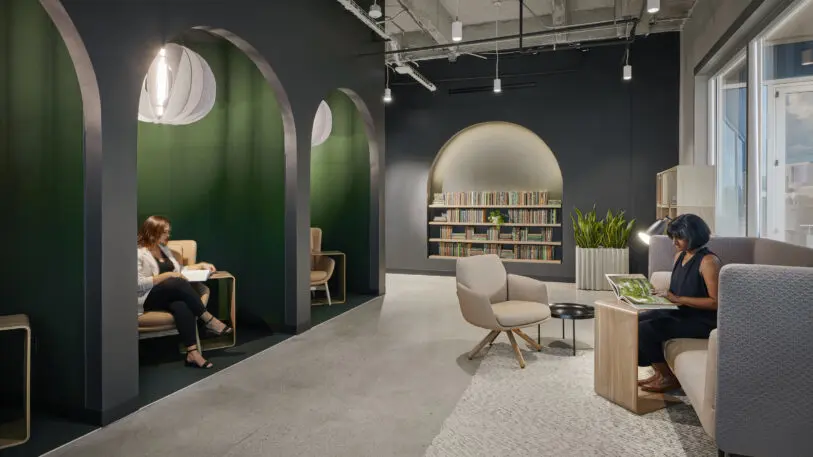
NI, formerly known as National Instruments, specializes in precision measurement tools like vibration monitors and oscilloscopes that track changes in electrical signals. It brought a scientific rigor to the office evaluation process, with surveys attached to nearly every piece of furniture and design detail, linked by QR code. About 615 people, a third of NI’s staff, worked in the test space and offered feedback on everything from natural light to chair ergonomics to the flexibility and placement of desks.
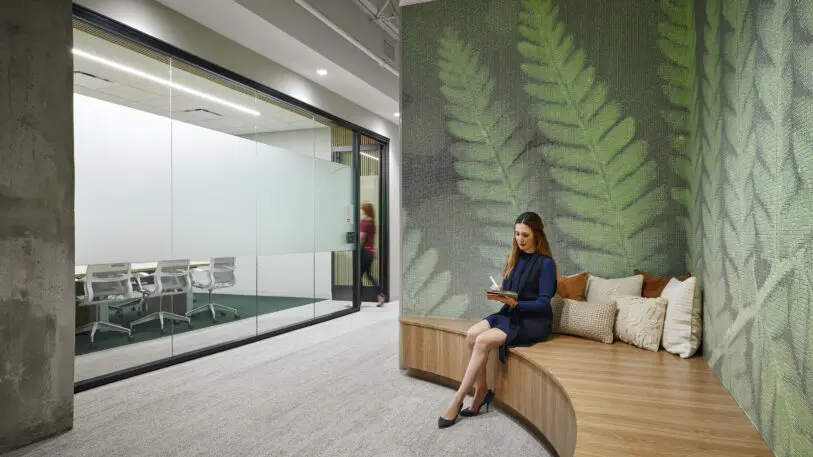
“As a true test, they needed to not only walk through it, but actually execute their work to see how the space enabled it or caused friction,” says Scott Strzinek, senior director of global facilities for NI. “We got a huge wave of feedback throughout that process.”
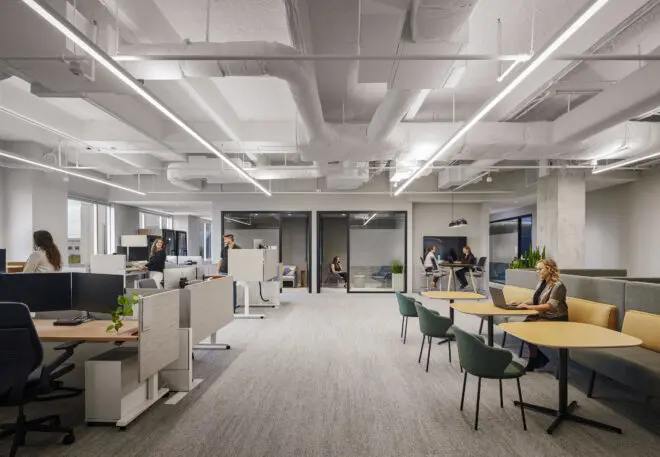
Responsible for building out the physical devices the company markets, the hardware team was stationed in the pilot space for its entire run, underscoring the importance of these workers to the company’s overall mission. Gensler’s Sula Ly, design director on the NI project, says this presented a challenge at first, as the designers were trying to blend thoughtful focus areas and adjustable desks for hybrid workers next to lab benches covered in circuit boards and soldering irons. They tried one approach of moving the messier hardware workspaces to the edge of the room, but feedback from employees told them that these cluttered desks and tables are actually essential to the company’s product development, so they were brought back from the fringes. “That is really how they work,” says Ly. “And if messiness is part of that process, as the design team we had to embrace that as well.”
Other more general spaces also benefited from the streams of workers trying them out and offering feedback, according to Wendy Young, senior program manager of facilities at NI who led the survey and feedback analysis. One large conference room elicited an unexpectedly large amount of negative feedback. “We learned really quickly that [it was a] cool idea, the space was awesome, it was beautiful, but it didn’t work,” Young says. The core issue was the audio-visual technology installed for teleconferencing, which picked up too much background noise and overpowered users with extraneous sound. “I’m glad we were able to test it because we would have put 100 of those on each floor,” Young says.
“You could say we dodged that bullet,” Strzinek says. “We identified the spaces that didn’t work and made sure we didn’t replicate them across the entire campus.”
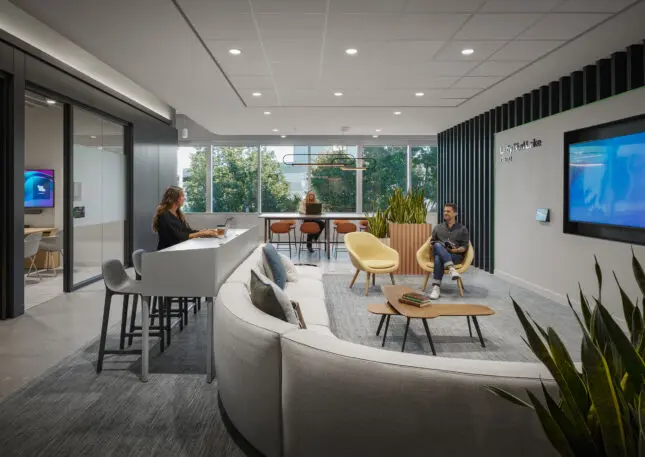
Strzinek says it’s difficult to calculate whether this design-test-build approach ended up costing more than a conventional renovation but notes that it did lengthen the project’s overall time line to final completion. But the testing process also helped NI avoid implementing problematic concepts or technologies that would be costly to replace later. “We’ve reduced the risk of the outcome so dramatically that it’s an easy compromise,” he says.

The company is now building out 115,000 square feet of its offices based on this process. They’ll solicit feedback as the new spaces are built out and used, and take that into account as other parts of the campus undergo renovation. “We will continue to iterate that just like we would with our products,” Strzinek says.
And though the process used at NI’s offices shares DNA with the company’s work, Strzinek says it would likely be useful for other companies as well. Testing ideas on a small scale and hearing from their eventual end users was crucial for developing a design that will work as the company needs it to. “I think if you’re going to build anything at a scale, this is the right way to do it,” he says.
Recognize your brand’s excellence by applying to this year’s Brands That Matter Awards before the early-rate deadline, May 3.
